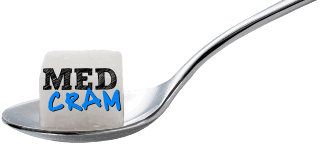In this video, Dr. Seheult of MedCram discusses the current influenza surge. Currently influenza activity is off the charts across the United States. California, Texas, Colorado, Washington are among the states that are surging with high numbers of infection. Last year’s flu vaccine had a 34-35% efficacy so we can’t depend on just the vaccine to protect us from the flu.
Swiss Cheese Model Approach
Here at MedCram we take a swiss cheese model approach. The more layers of protection we can find against fighting an infection, the better protected we can be. We are big believers that there is something about sunlight that can help significantly in fighting infections. You can watch our sunlight video here.
Sunlight and influenza
In this article by Slusky and Zeckhauser, they looked to see if sunlight had any protective effect against influenza. They looked at all of the flu seasons from 2008 to 2018. It should be noted that in 2009 was the H1N1 flu epidemic. They found that as you go down in sunlight level there was an increase in the state-week mean flu index. This index reflects what a state during a particular week was experiencing in its influenza numbers. The article suggested that there was a reduction in the amount of flu if there was more sunlight. It led them to the conclusion that the study reinforced the long held assertion that vitamin D protects against upper respiratory infections.
Is vitamin D the only benefit we get from the sun?
However, the idea that vitamin D is doing most of the heavy lifting in fighting respiratory infections is an assumption. There are many aspects of sunlight that may be providing additional benefit beside vitamin D. MedCram’s sunlight video is something that may be eye opening for many. It is hypothesized that near infrared radiation may actually be producing melatonin which is a powerful antioxidant that can help fight infections too. Regardless of what the mechanism may be, it is ideal to get out and get some sunlight as you are able to, especially in winter months where it may be more scarce.
Ultraviolet B radiation exposure and influenza
Another article discusses the 1918-1919 influenza pandemic in the US. They looked at the possible roles of solar ultraviolet-B radiation and vitamin D in reducing case fatality rates. In general, the higher the latitude goes, the less ultraviolet B radiation there will be due to less sun exposure. The researchers found that in terms of the case-fatality rate, as the ultraviolet B radiation rate went up, there were noted to be less deaths; however, as the latitude went up the higher the case-fatality rate there was. Likewise for those that developed pneumonia as a complication of influenza, the more ultraviolet B radiation there was the less chance of pneumonia as a complication occurred, and the higher the latitude the greater the likelihood of pneumonia complicating an influenza infection.
What about NAC?
NAC or N-acetylcysteine treatment is an antioxidant that recharges your glutathione system. There was an article from the European Respiratory Journal that gave 262 subjects that were suffering from nonrespiratory chronic degenerative diseases either a placebo or NAC tablets 600 mg twice daily for 6 months. They found that there was no difference between the groups who got an influenza infection but that they did find that in the placebo group 79% of those infected with influenza got a symptomatic form whereas only 25% of virus-infected subjects who had received the NAC treatment developed symptoms. NAC given for 6 months wasn’t able to prevent an infection, but it did appear to help in the severity in the symptomatology of the infection.
What about antivirals?
To round out the discussion, it is important to include what antiviral drugs for influenza are available. There are 4 main drugs in 2022-2033. They can be used for treatment or chemoprophylaxis (meaning you’ve been exposed to the virus but do not have symptoms yet). The main classes of these drugs are neuraminidase inhibitors which prevent the virus from binding onto the cell and cap-dependent endonuclease inhibitors which block the ability of the virus to use the mRNA machinery from the host cell as it tries to replicate its genome. Oseltamivir or Tamiflu needs to be started within 48 hours of symptoms and treatment is normally 5 days. It is the treatment of choice in pregnant women and hospitalized patients. Peramavir is intravenous only and will be used primarily in the hospital. Zanamivir is inhaled and is not recommended for people with severe influenza. The cap dependent endonuclease inhibitor drug is called baloxavir. It is oral, but it only has to be given once unlike the other drugs which require a several day course. It is not recommended for use in severe influenza. There is a table of these drugs here.
MedCram again encourages you to take all precautions in trying to stay healthy and take some time to be outdoors as you are able to.
LINKS / REFERENCES:
Flu hospitalizations soar as triple viral threat looms ahead of holidays (Washington Post) | https://www.msn.com/en-us/health/othe…
Sunlight and Protection Against Influenza (ScienceDirect) | https://www.sciencedirect.com/science…
Attenuation of influenza-like symptomatology and improvement of cell-mediated immunity with long-term N-acetylcysteine treatment (ERJ) | https://erj.ersjournals.com/content/1…
Antiviral Drugs for Influenza for 2022-2023 (Medical Letter) | https://secure.medicalletter.org/TML-…
Interim US Flu Vaccine Effectiveness (VE) Data for 2021-2022 (CDC) | https://www.cdc.gov/flu/vaccines-work…
The possible roles of solar ultraviolet-B radiation and vitamin D in reducing case-fatality rates from the 1918–1919 influenza pandemic in the United States (Dermato Endocrinology) | https://www.ncbi.nlm.nih.gov/pmc/arti…
Videos on a variety of medical topics including health optimization are at MedCram.com
Stay Tuned for More Updates
Our COVID-19 videos are always available for free (and ad-free) at MedCram.com. In addition, check out our full library of courses and lectures on subjects ranging from Hypertension Explained Clearly to Sleep Apnea Explained Clearly Course and many more!
Meanwhile, you can find all of our COVID-19 videos compiled here.
Visit MedCram.com for updates on Monkeypox virus infectious disease and more.
